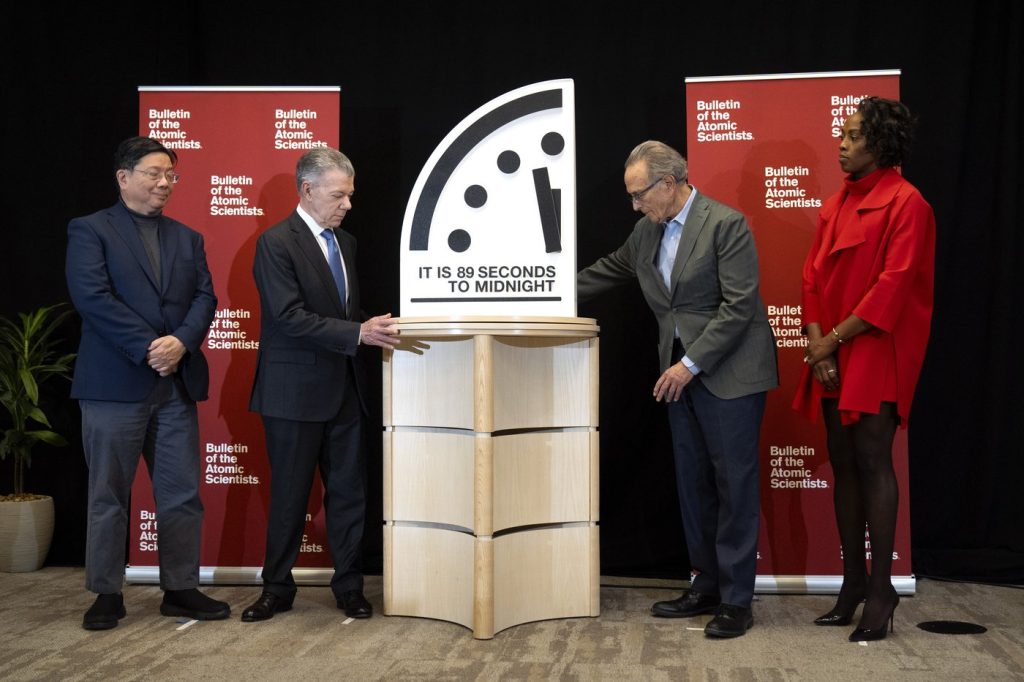The Bulletin of the Atomic Scientists announced on Tuesday that the "Doomsday Clock" has been moved to 89 seconds until midnight, marking the closest it has ever been to signaling humanity's proximity to destruction. This is a critical update from the previous setting of 90 seconds, held for the past two years. The organization, known for its science-oriented advocacy, expressed deep concerns regarding various existential threats facing the world today, including climate change, the proliferation of nuclear weapons, instability in the Middle East, the potential for pandemics, and the integration of artificial intelligence in military operations.
Daniel Holz, chair of the group’s science and security board, emphasized the gravity of the situation, stating, "When you are at this precipice, the one thing you don’t want to do is take a step forward." He voiced particular concern over the cooperation between countries such as North Korea, Russia, and China in advancing their nuclear programs. The alarming rhetoric surrounding the potential use of nuclear weapons, particularly from Russian President Vladimir Putin in the context of the ongoing war in Ukraine, has further contributed to the group's worries. Holz noted, “A lot of the rhetoric is very disturbing,” pointing to a growing sense that the use of nuclear weapons could become a frightening reality if nations continue down this path.
Since its inception in 1947, the Doomsday Clock has served as a symbolic representation of humanity’s existential risks. At its closest during the Cold War, it was set as far back as 17 minutes to midnight. However, in light of rapidly changing global dynamics, the Bulletin has shifted its focus from counting down minutes to counting down seconds in recent years, reflecting a more immediate sense of urgency.
The group also highlighted that the Doomsday Clock could be reset to represent a safer world if global leaders and nations collaboratively address these existential threats. There exists a possibility of reversing the clock's current alarming setting, contingent on effective international cooperation and proactive measures taken to mitigate the pressing issues mentioned.
The announcement was made during a news conference at the United States Institute of Peace in Washington on January 28, 2025, where notable figures from the Bulletin of the Atomic Scientists, including former Colombian President Juan Manuel Santos, were present. The event underscored the serious nature of the current global risks and emphasized the urgent need for decisive action from world leaders.
As the world faces multiple interconnected crises, the importance of addressing these challenges through cooperation and constructive dialogue is more critical than ever. The decisions made in the coming years will shape the future of humanity and the planet, ultimately determining whether humanity can pull back from the brink as represented by the Doomsday Clock.










